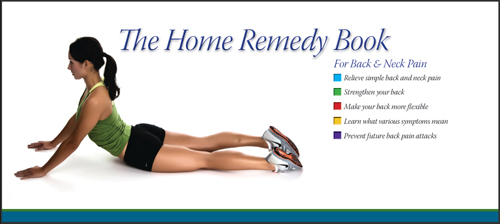- Locations
- Find a Physician
- By Physician
- By Department
- The Center for Spine Health
- Hand & Wrist Center
- Shoulder & Elbow Center
- Foot & Ankle Center
- Joint Replacement Center
- The Sports Medicine Center
- Pediatric Orthopedic Center
- Trauma & Fracture Center
- Osteoporosis and Bone Health
- Oncology Center
- Cartilage Repair Center
- Concussion Rehab Center
- OrthoDirect
- Careers
- Patient Portal
- Intranet
Flatback Syndrome | Pediatric Scoliosis | Adult Scoliosis | Surgical Options | Harrington Rod | Lordosis
 About Adult Scoliosis
About Adult Scoliosis
Adult scoliosis relates to anyone that has scoliosis and is eighteen or older. Adult scoliosis is different from children scoliosis cases in that adults are skeletally mature and may have different treatment options. Scoliosis in adults is usually accompanied with back pain and that is why they choose to get themselves evaluated. Treatment difficulties for the spine surgeon may exist since adult scoliosis can cause the spine to become stiff. In many cases, advanced disc degeneration that can create severe pain is accompanied with the scoliosis. Many patients with adult scoliosis may experience osteoporosis, which can play a contributing factor. All of these factors add into the equation of what treatment is right for the patient.
Most treatment for adult scoliosis is non-operative. A spine specialist will put together an individualized treatment program consisting of exercise and conditioning to help the patient increase function and energy, while trying to reduce the source of pain. Steroid injections may also be used to help control pain. Bracing is rarely used in adults nor does it provide pain relief.
Surgery is recommended for curvatures that have gradually worsen or previous treatment options have all been exhausted and the pain still persists. It is not uncommon in adult scoliosis cases when discs are severely degenerated, which require the spinal fusion to be extended down to the sacrum. This situation may require the surgeon to perform the surgery on both your back and front side.
The length of the recovery is dependent of how extensive the surgery was and the age of the patient. Some patients will be back to full activity in three months, and some patients may need as long as six to nine months to properly heal. Many patients become thrilled and happy knowing the pain they suffered with is no longer going to bother them.
Types of Adult Scoliosis
Adult scoliosis refers to the development or progression of a spinal curvature in individuals who have reached skeletal maturity (typically after the age of 18). There are different types of adult scoliosis, which can be categorized based on the underlying cause or origin of the spinal curvature. Here are some common types:
-
Idiopathic adult scoliosis: Idiopathic scoliosis refers to cases where the cause of the curvature is unknown. Idiopathic adult scoliosis can either be a continuation of adolescent idiopathic scoliosis that was present during adolescence or can develop de novo (newly) in adulthood.
-
Degenerative scoliosis: Also known as de novo degenerative scoliosis or adult-onset degenerative scoliosis, this type of scoliosis is associated with degenerative changes in the spine, such as disc degeneration, facet joint arthritis, and spinal stenosis. These age-related changes can lead to an asymmetrical collapse of the spinal segments and the development of a scoliotic curvature.
-
Secondary scoliosis: Secondary scoliosis occurs as a result of an underlying condition or event. Some examples include scoliosis caused by osteoporosis-related vertebral compression fractures, spinal tumors, previous spinal surgery, or neuromuscular disorders (e.g., cerebral palsy, muscular dystrophy) that affect the muscles and nerves responsible for spinal alignment.
-
Postural scoliosis: Postural scoliosis is not a structural spinal deformity but rather a reversible curvature that occurs due to poor posture habits. It can be seen in individuals who consistently maintain asymmetrical or unbalanced postures over time.
-
Neuromuscular scoliosis: This type of scoliosis is associated with underlying neuromuscular conditions that affect the muscles, nerves, or both. Examples include cerebral palsy, muscular dystrophy, spinal muscular atrophy, and spina bifida. The abnormal muscle tone or weakness in these conditions can lead to imbalances and progressive spinal curvature.
It's important to note that adult scoliosis can vary widely in terms of severity, progression, and symptoms. Some individuals may have mild curvatures that cause minimal discomfort, while others may experience significant spinal deformity and associated pain or functional limitations. Treatment options for adult scoliosis depend on factors such as the underlying cause, severity of the curvature, symptoms, and individual circumstances, and may include observation, physical therapy, pain management, bracing, or, in some cases, surgery. A healthcare professional with expertise in spine conditions, such as an orthopedic surgeon or spine specialist, can provide an accurate diagnosis and recommend appropriate treatment options for adult scoliosis.
Adult Scoliosis Spine Surgeons
Testimonials
Eloise's Story
Hip Spine Syndrome left Eloise perpetually bent over. After years of suffering and multiple doctor visits, she met University Orthopedics' spine surgeon, Dr. Alan Daniels and Dr. Bassel Diebo - two of the few people who could actually treat her issue. Here's her myUOIstory











